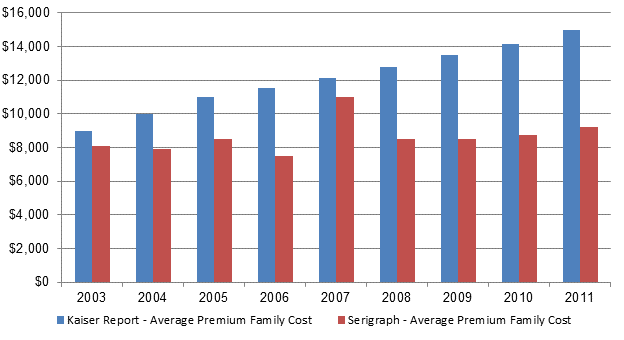 In great anticipation of John Torinus headlining this year’s Human Capital Summit on March 13, 2014, we are sharing his blog content on the 5 Steps To Control Health Costs. This content was derived from his book The Compay That Solved Health Care. In addition to this topic, John will bring new insight during our event from his latest book Opt Out On Obamacare, Opt Into The Private Heath Care Revolution.
In great anticipation of John Torinus headlining this year’s Human Capital Summit on March 13, 2014, we are sharing his blog content on the 5 Steps To Control Health Costs. This content was derived from his book The Compay That Solved Health Care. In addition to this topic, John will bring new insight during our event from his latest book Opt Out On Obamacare, Opt Into The Private Heath Care Revolution.
Any organization can take immediate steps to tame the hyperinflation of health care costs and premiums. Innovators in health care delivery in the private sector have paved the way to proven methods for cutting costs. Not surprisingly, managing costs and improving health go hand in hand. Here are the basic steps that managers can take to not just curtail costs, but to reduce them:
1. Adopt a consumer-driven health plan (CDHP). That means setting up personal health accounts for employees – either an HSA or HRA – as an offset to higher deductibles and co-insurance. Behavior immediately changes, since plan members are spending their own money. Over-utilization disappears. Consumerism appears. Employees start shopping for price, service and quality. Lifestyles improve. CDHP premiums are typically 20%-40% below those of standard plans.
2. Make prices and quality transparent. Various web sites in different regions of the country display prices from providers, and some show quality ratings. Find the one that works best in your market and make it user-friendly for your employees. Prices vary by a factor of three-to-one in most markets for medical procedures, so huge savings are available with sharp consumer information.
3. Identify Centers of Value (COV). Not all providers are created equal. Some have far better quality metrics than their peers. They are often the hospitals and clinics that have adopted lean management disciplines. Some lean hospitals have, for instance, eliminated infections in their operating rooms. That’s where you want to be for a procedure. Prices often track with quality. In other words, better quality and lower prices go together. COV prices are often 30%-40% less than standard, and some offer a comprehensible all-in bill. Publish a list of the Centers of Value in your market.
4. Emphasize primary care. Intimate primary care keeps people out of hospitals, which are dangerous and expensive places. One night in a hospital can cost $5,000. Preferably, bring a clinic on-site at your organization, even if it is staffed by a nurse practitioner instead of a doctor. If that’s not possible, find a nearby clinic that will offer convenient primary care. Costs drop by about one-third when your own primary care doctors and their staffs become the front end of the medical system.
5. Get serious about chronic disease. The experts agree that the 80-20 rule applies in health care, that 80% of the costs are incurred by 20% of the people, those with chronic disease conditions. An effective primary care team can provide a medical home where chronic conditions, like diabetes, asthma, hypertension and depression, can be treated in a systematic, proactive manner. These conditions can be managed so they don’t become catastrophic and horribly expensive. You owe it to your employees to create a support system to help them avoid poor health and the hospital.
These are the major platforms for getting a rein on health care costs. It is ground-up reform of the delivery system. It’s all about changing human behavior and engaging individual responsibility. No system can work without those key elements as foundations. Don’t delay - take these five steps today.
For a more complete explanation on how to get from run-away costs to sanity in your health care budget, check out my book,The Company That Solved Health Care.






